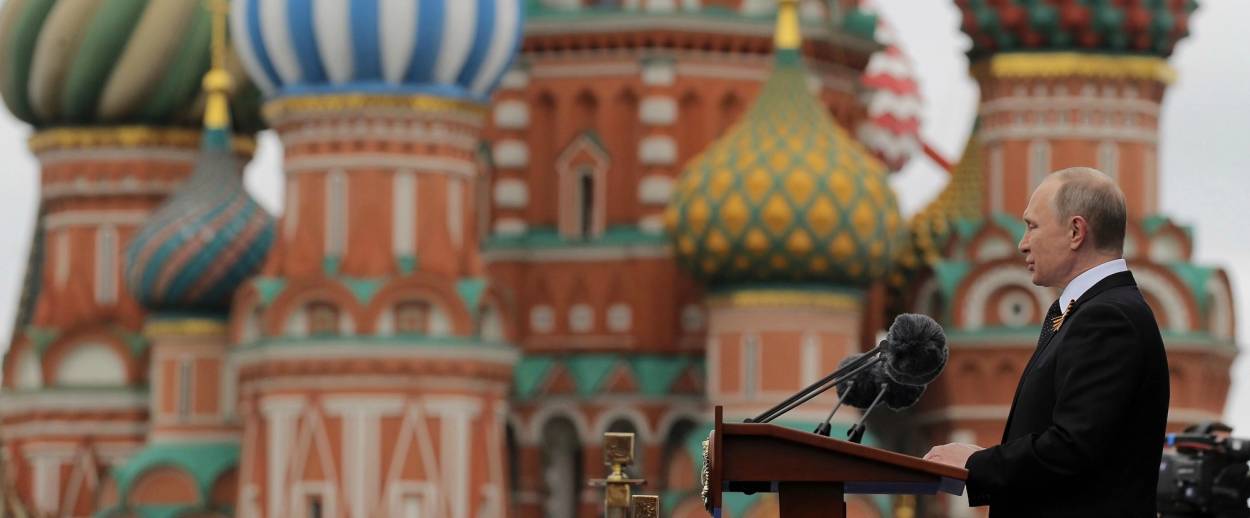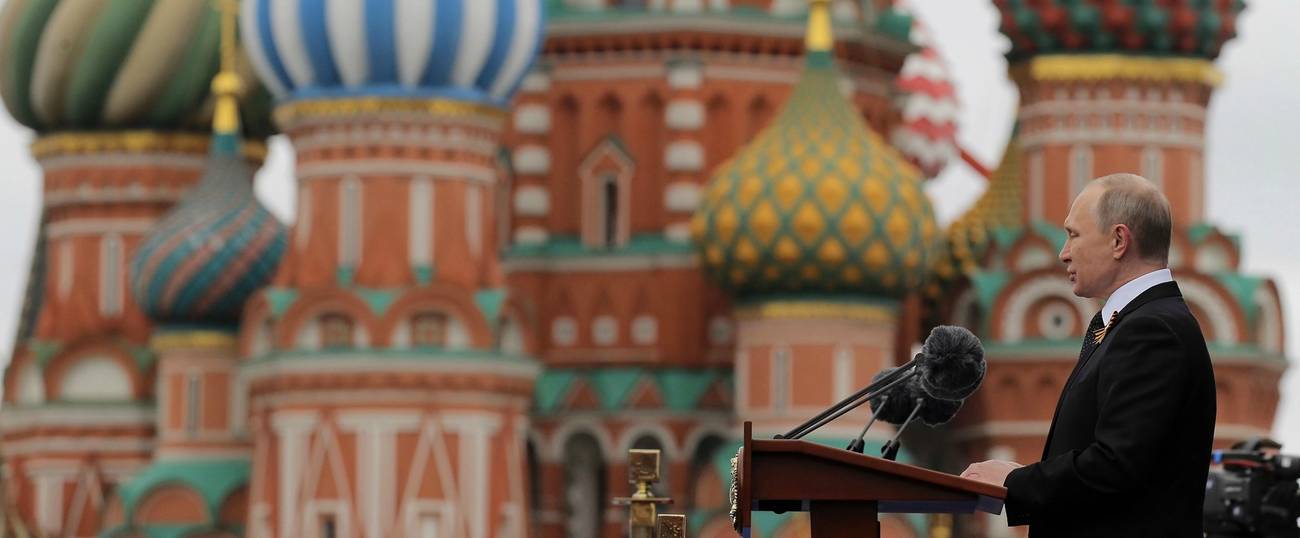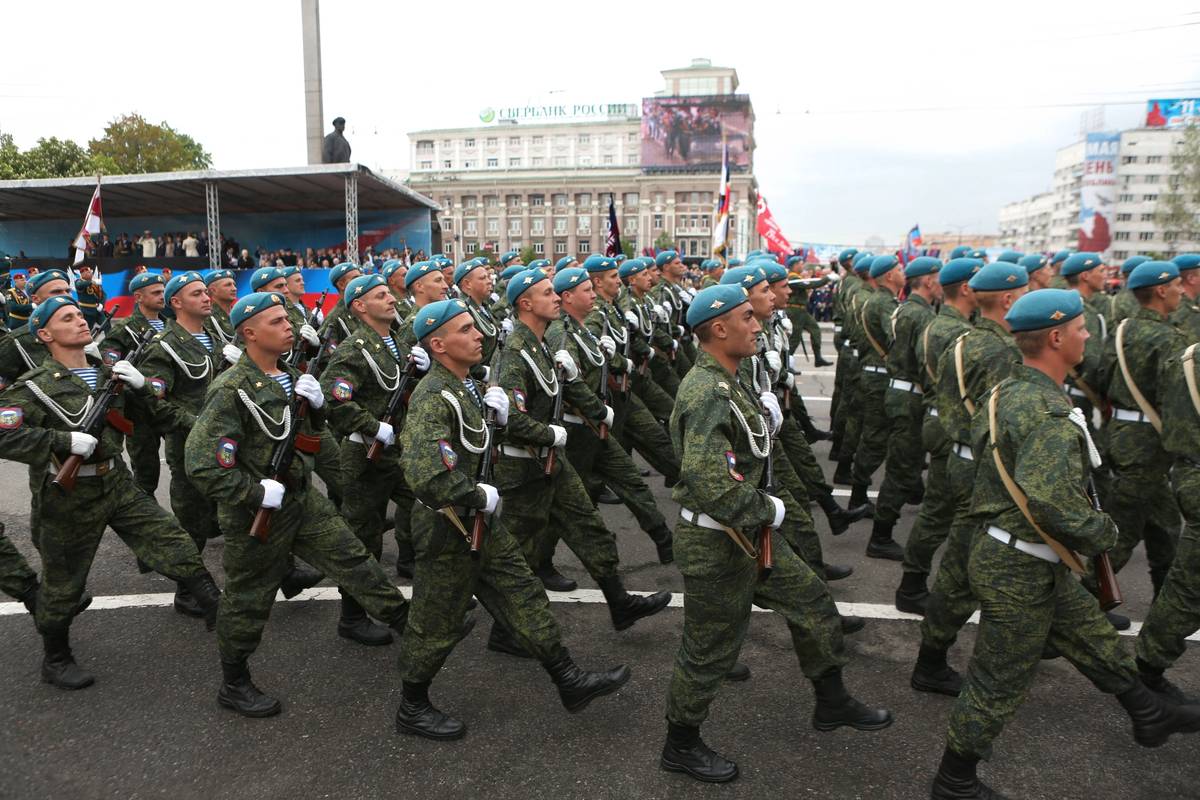In Post-Soviet Ukraine, Victory Day Is a Matter of Interpretation
Protesters flock to numerous pro-Russia marches commemorating the Soviet Union’s victory over Nazi Germany




For three years, since the beginning of the conflict between Ukraine and Russia, Victory in Europe Day, or VE Day—which commemorates the Allied victory over Nazi Germany and is celebrated by post-Soviet countries on May 9 rather than May 8—has been marked by ideological struggle and conflicting interpretations of historical events. In Moscow, the Russian government celebrated the anniversary with belligerent displays of militarized pomp during the annual parade in Red Square, while commemorative events all over Ukraine broke out in violence.
Though post-Soviet identity is a complex and fluid matter, Ukraine remains bitterly divided between citizens who recall the Soviet Red Army as heroic vanquishers of Nazism and who skew pro-Moscow and those who remember it chiefly for waging war against patriotic Ukrainian nationalists who fought a guerrilla war against Soviet authorities all over Western Ukraine until the mid-’50s. In May of 2015, the Ukrainian parliament passed a set of decommunization laws that banned the Communist party and all Communist era flags, banners and imagery. Russia has largely gone in the other direction with memory policy to leverage the communist legacy for contemporary goals. Instead of the orange-and-black-striped World War II era ribbon of St.George—which has been co-opted by the Russian-led separatist forces in Luhansk and Donetsk as a symbol of their resistance against the Kiev government that they consider to be fascist—the Ukrainians have instituted the red poppy, which is also widely worn in other parts of Western Europe.

The marches, which began in Russia as an apolitical alternative to bombastic state memorials, but have since been co-opted by the Kremlin for jingoistic ends are widely considered to be provocative by Ukrainian nationalists. They typically draw the older pro-Russian portion of the population that is nostalgic for the Soviet Union.
Altercations of varying levels of severity took place at commemoration sites all across Ukraine’s largest cities on Tuesday, with the most serious taking place in Kiev, Odessa, and Dnipro, all of which saw mass brawling. Marches of the “Immortal Regiment,” in which survivors of the WWII and their proud descendants carry pictures of relatives who fell or were wounded in the war effort took place in every major city in Ukraine. The concerted police and army deployments kept far worse skirmishing between the opposing sides from taking place, and the Odessa commemoration that I attended saw 20 arrests made. Older people who arrived with Communist-era ribbons and communist memorabilia were told to take them off and for the most part complied with the law banning Soviet-era imagery.
Earlier today, in response to widespread Ukrainian criticism of the poor police response to the particularly intense brawl that took place in Dnipro—and which led to the bloody beating of a veteran who fought against Russian led separatist forces—Ukraine’s interior minister Arsen Avakov sacked the head of the Dnipro police force. Avakov also pledged that eight paid pro-Russian bruisers would be severely prosecuted. Meanwhile, the war in Eastern Ukraine continues to grind on as a Ukrainian soldier was killed and at least eight more were reported to be wounded yesterday.
With Russia in the midst of allegations of having hacked the French elections and at the center of myriad unfolding scandals surrounding the Trump Administration, the parade in Russia was more than the usual spectacle of brute force aimed at the West. Underlining the Kremlin’s isolation was the fact that no heads of state were in attendance, except for the pro-Russian president of Moldova. By comparison more than three dozen heads of state attended the 2010 commemorations—this year, even the presidents of Belarus and Kazakhstan stayed home.
Vladislav Davidzon is Tablet’s European culture correspondent and a Ukrainian-American writer, translator, and critic. He is the Chief Editor of The Odessa Review and a Non-Resident Fellow at the Atlantic Council. He was born in Tashkent, Uzbekistan, and lives in Paris.